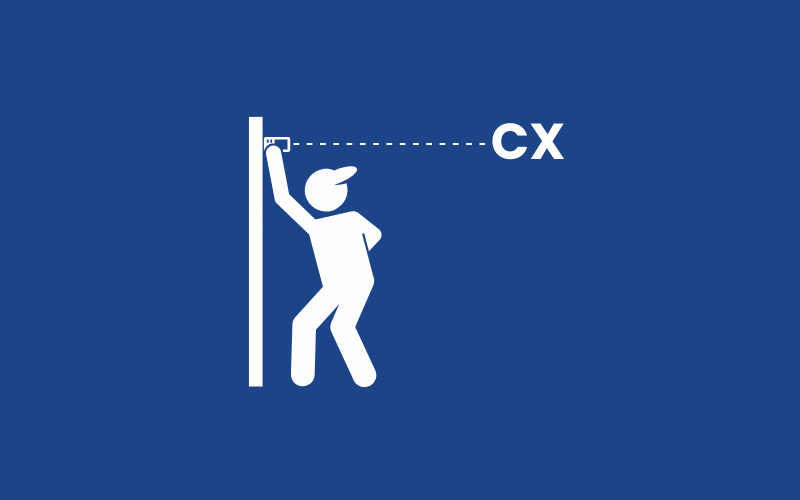Introduction:
In today’s competitive business landscape, creating memorable customer experiences has emerged as a crucial strategy for sustained success. The Customer Experience Metric plays a pivotal role in quantifying the effectiveness of these efforts. This comprehensive guide dives into the nuances of the Customer Experience Metric, its measurement, optimization strategies, and its impact on business growth.
Unveiling the Customer Experience Metric
The Customer Experience Metric, often referred to as CEM, is a quantifiable measure that evaluates the overall satisfaction and sentiment of customers throughout their interaction with a brand, product, or service. It provides valuable insights into various touchpoints of the customer journey, enabling businesses to fine-tune their strategies for optimal customer satisfaction.
Understanding Customer Experience Metrics
Customer experience metrics encompass a range of indicators that collectively provide a holistic view of customer satisfaction. These metrics enable businesses to identify pain points and opportunities, thus facilitating informed decision-making. Here are some key CX metrics:
1. Net Promoter Score (NPS):
NPS gauges customer loyalty by asking a simple question: “On a scale of 0 to 10, how likely are you to recommend our product/service to a friend?” Promoters (9-10), Passives (7-8), and Detractors (0-6) help in categorizing customer sentiment.
2. Customer Satisfaction Score (CSAT):
CSAT measures immediate customer satisfaction post-interaction. A question like “How satisfied are you with your experience today?” is commonly posed, and responses are recorded on a scale.
3. Customer Effort Score (CES):
CES evaluates the ease of customer interactions. By asking “How easy was it to resolve your issue?”, businesses can pinpoint areas needing improvement in their processes.
Measuring the Customer Experience Metric
Effective measurement of the Customer Experience Metric requires a well-defined process that captures both quantitative and qualitative data. Here’s a step-by-step approach:
Step 1: Identify Key Touchpoints:
Map out the customer journey and identify critical touchpoints where customer interactions occur. This could include browsing, purchasing, post-purchase support, and more.
Step 2: Select Relevant Metrics:
Choose the CX metrics that align with your business goals and the identified touchpoints. NPS, CSAT, and CES are commonly used, but you can tailor them to suit your specific needs.
Step 3: Gather Data:
Collect data through surveys, feedback forms, and other customer communication channels. Ensure the data collection process is seamless and unintrusive.
Step 4: Analyze and Interpret:
Analyze the gathered data to derive meaningful insights. Understand patterns, trends, and correlations to identify areas of improvement and strengths.
Step 5: Implement Improvements:
Use the insights gained to implement strategic changes in your processes, products, or services. Regularly track the impact of these changes on your chosen CX metrics.
Optimizing the Customer Experience Metric
Optimizing the Customer Experience Metric involves continuous refinement of customer-facing processes. Here’s how you can ensure a positive impact on your CX Metric:
1. Personalization Matters:
Tailor experiences to individual customer preferences. Leverage data to offer personalized recommendations and solutions.
2. Seamless Multi-Channel Experience:
Ensure consistency across all customer touchpoints, be it your website, social media, or physical stores. A seamless experience fosters customer loyalty.
3. Proactive Issue Resolution:
Anticipate customer issues and provide proactive solutions. Addressing concerns before they escalate showcases your commitment to customer satisfaction.
4. Employee Training and Engagement:
Your frontline employees play a vital role in delivering exceptional customer experiences. Regular training and a positive work environment can boost their performance.
Impact of Customer Experience Metric on Business Growth
The Customer Experience Metric directly influences business growth and success. Positive customer experiences lead to increased customer loyalty, word-of-mouth referrals, and brand advocacy. Conversely, negative experiences can tarnish a brand’s reputation and drive customers away. By consistently monitoring and optimizing the CX Metric, businesses can:
- Enhance Customer Loyalty: Satisfied customers are more likely to remain loyal and make repeat purchases.
- Drive Customer Advocacy: Delighted customers become brand advocates, spreading positive word-of-mouth.
- Increase Customer Lifetime Value: Positive experiences lead to higher customer retention and increased spending over time.
FAQs about Customer Experience Metric
Q: What industries benefit the most from focusing on the Customer Experience Metric?
A: Virtually all industries can benefit from prioritizing customer experience. From retail to tech, exceptional CX drives success.
Q: Can small businesses effectively utilize the CX Metric?
A: Absolutely! The CX Metric levels the playing field, allowing small businesses to compete through outstanding customer service.
Q: Is the CX Metric a one-size-fits-all approach?
A: Not quite. While core principles apply universally, tailoring CX strategies to your industry and audience is crucial.
Q: How frequently should I measure the CX Metric?
A: Regular measurement is key. Quarterly or semi-annual assessments help track progress and implement timely improvements.
Q: Can technology aid in optimizing the CX Metric?
A: Definitely. Customer relationship management (CRM) software and data analytics tools can provide valuable insights for optimization.
Q: What’s the link between employee satisfaction and the CX Metric?
A: Happy employees often lead to happy customers. Engaged and motivated staff are more likely to deliver exceptional service.
Conclusion
In the dynamic world of business, the Customer Experience Metric stands as a powerful compass guiding organizations towards success. By understanding, measuring, and optimizing this metric, businesses can foster lasting customer relationships, elevate brand loyalty, and drive remarkable growth. Remember, in today’s competitive landscape, a satisfied customer is not just a sale, but a valuable investment in the future of your business.


